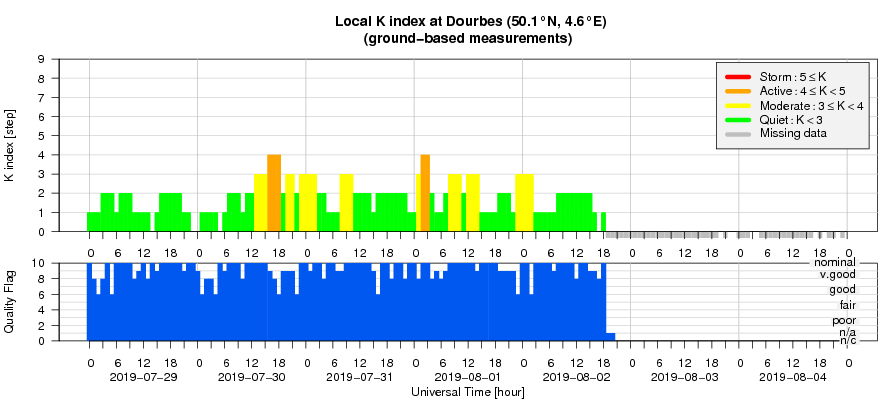- Table of Content
- 1.Anne
- 2.PROBA2 Observa...
- 3.Review of sola...
- 4.The Internatio...
- 5.Review of geom...
- 6.Geomagnetic Ob...
- 7.The SIDC space...
- 8.Review of iono...
2. PROBA2 Observations (29 Jul 2019 - 4 Aug 2019)
3. Review of solar activity
4. The International Sunspot Number by SILSO
5. Review of geomagnetic activity
6. Geomagnetic Observations at Dourbes (29 Jul 2019 - 4 Aug 2019)
7. The SIDC space weather Briefing
8. Review of ionospheric activity (29 Jul 2019 - 4 Aug 2019)
Anne
Still in complete awe, we have to bring terrible news: Anne Vandersyppe, our Anne, died on July 31, 2019. Anne passed away peacefully after one year of sickness.
Anne was a very warm person. She was the smiling face and anchor of many conferences, ESWW, CESRA, Solar Orbiter workshop. Anne brought meetings together - the one who met us as we arrived and waved us goodbye at the end, coping calmly with all the ups and downs that occurred in between, and always with a smile on her face.
When we had a question - about forms, about an organisational issue, … when we had serious and silly things to tell, ... when we needed whatever we needed, we popped into the office of Anne.
Anne had the gift to make people, colleagues, foreign guests feel at their ease and appreciated. When Anne was present, you knew that everything was going to go fine.
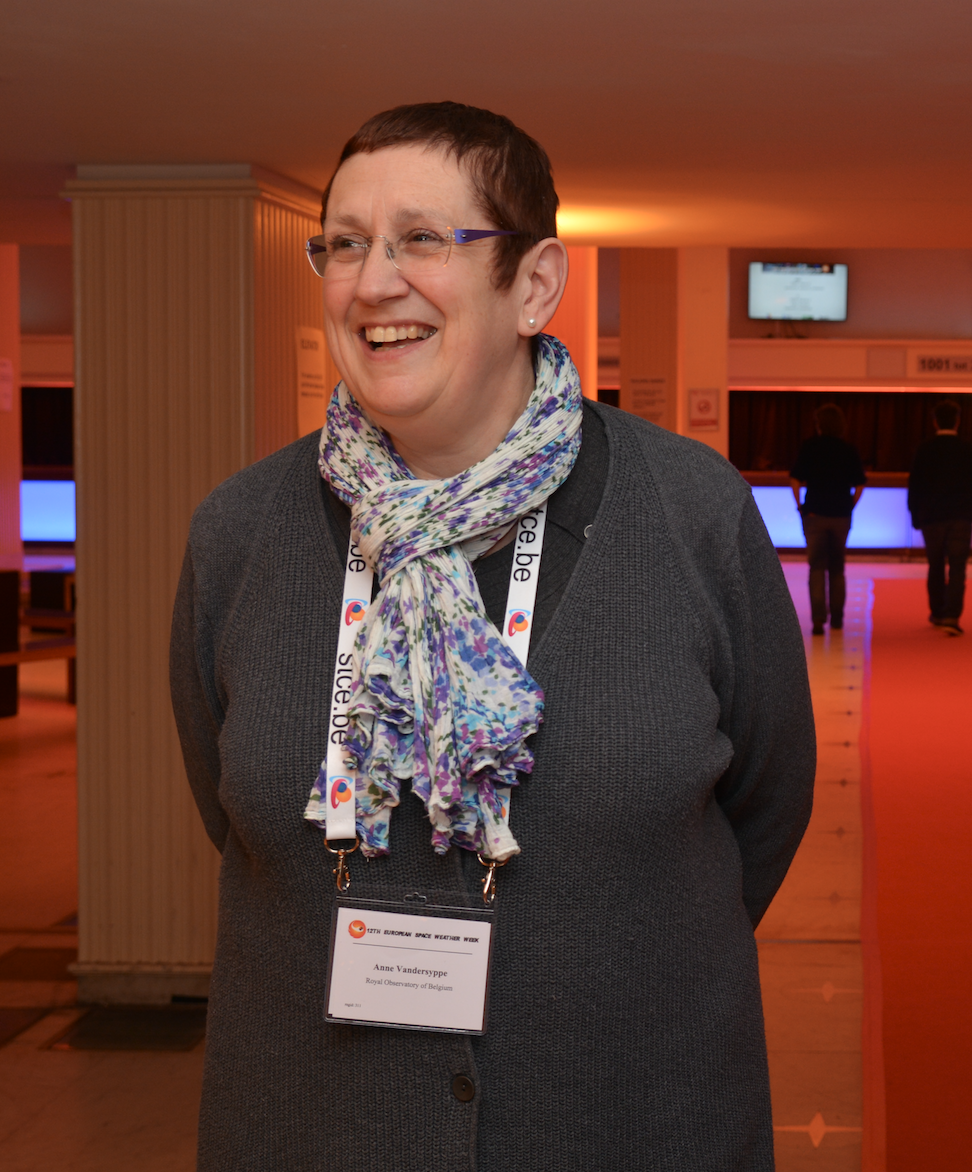
We will miss her so much, but at the same time we are smiling because of all the pleasant memories and good things she gave us.
PROBA2 Observations (29 Jul 2019 - 4 Aug 2019)
Solar Activity
Solar flare activity remained very low during the week.
In order to view the activity of this week in more detail, we suggest to go to the following website from which all the daily (normal and difference) movies can be accessed: http://proba2.oma.be/ssa
This page also lists the recorded flaring events.
A weekly overview movie can be found here (SWAP week 488): http://proba2.oma.be/swap/data/mpg/movies/weekly_movies/weekly_movie_2019_07_29.mp4
Details about some of this week's events can be found further below.
If any of the linked movies are unavailable they can be found in the P2SC movie repository here: http://proba2.oma.be/swap/data/mpg/movies/
Sunday Aug 04
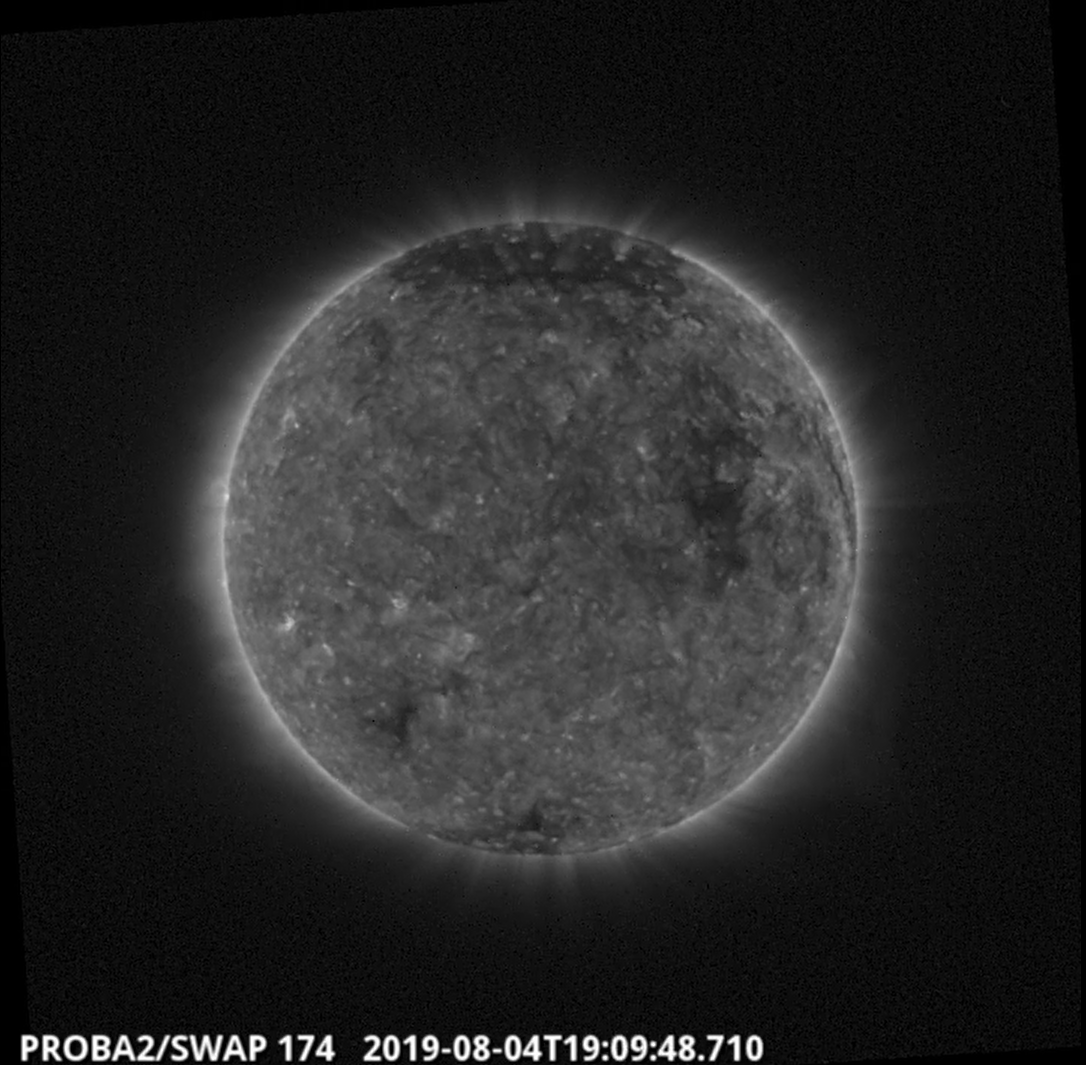
A filament eruption was observed by SWAP on 2019-Aug-04 and is visible in the north-west quadrant of the solar disk in the SWAP image above taken at 19:09 UT.
Find a movie of the event here (SWAP movie): http://proba2.oma.be/swap/data/mpg/movies/20190804_swap_movie.mp4
Review of solar activity
No active regions were seen on the solar disc.
No flares were observed.
No Earth-directed CMEs were detected.
The greater than 10 MeV proton flux was at nominal levels throughout the whole week.
An equatorial coronal hole with negative polarity crossed the central meridian on July 28. An equatorial coronal hole with positive polarity crossed the central meridian on August 1.
The International Sunspot Number by SILSO
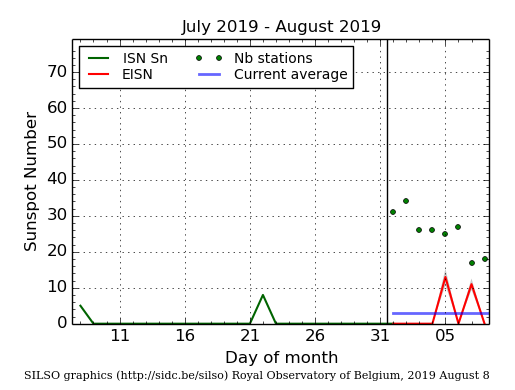
The daily Estimated International Sunspot Number (EISN, red curve with shaded error) derived by a simplified method from real-time data from the worldwide SILSO network. It extends the official Sunspot Number from the full processing of the preceding month (green line). The plot shows the last 30 days (about one solar rotation). The horizontal blue line shows the current monthly average, while the green dots give the number of stations included in the calculation of the EISN for each day.
Review of geomagnetic activity
The precursor of the negative coronal hole reached Earth on July 30. The fast solar wind arrived on July 31. The solar wind speed was close to 600 km/s. The interplanetary magnetic field reached values up to 11 nT.
As a consequence, active geomagnetic conditions were observed in Dourbes (K Dourbes = 4) on July 30-31. At the planetary level, the geomagnetic conditions were unsettled (Kp = 3) .
The fast solar wind from the positive polarity coronal hole reached Earth on August 5 causing minor storm conditions (Kp = 5).
The SIDC space weather Briefing
The Space Weather Briefing presented by the forecaster on duty from July 29 to August 4. It reflects in images and graphs what is written in the Solar and Geomagnetic Activity report.
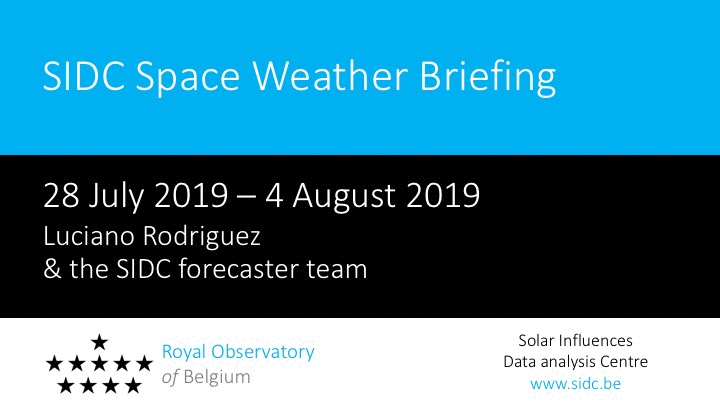
The pdf-version: http://www.stce.be/briefings/20190805_SWbriefing.pdf
The automatically running presentation: http://www.stce.be/briefings/20190805_SWbriefing.ppsm
Review of ionospheric activity (29 Jul 2019 - 4 Aug 2019)
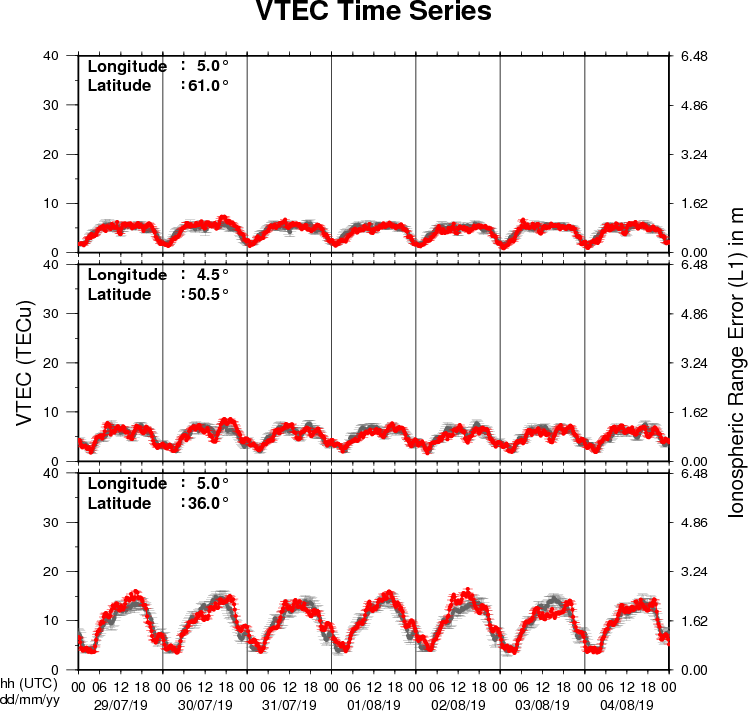
The figure shows the time evolution of the Vertical Total Electron Content (VTEC) (in red) during the last week at three locations:
a) in the northern part of Europe(N61°, 5°E)
b) above Brussels(N50.5°, 4.5°E)
c) in the southern part of Europe(N36°, 5°E)
This figure also shows (in grey) the normal ionospheric behaviour expected based on the median VTEC from the 15 previous days.
The VTEC is expressed in TECu (with TECu=10^16 electrons per square meter) and is directly related to the signal propagation delay due to the ionosphere (in figure: delay on GPS L1 frequency).
The Sun's radiation ionizes the Earth's upper atmosphere, the ionosphere, located from about 60km to 1000km above the Earth's surface.The ionization process in the ionosphere produces ions and free electrons. These electrons perturb the propagation of the GNSS (Global Navigation Satellite System) signals by inducing a so-called ionospheric delay.
See http://stce.be/newsletter/GNSS_final.pdf for some more explanations ; for detailed information, see http://gnss.be/ionosphere_tutorial.php
